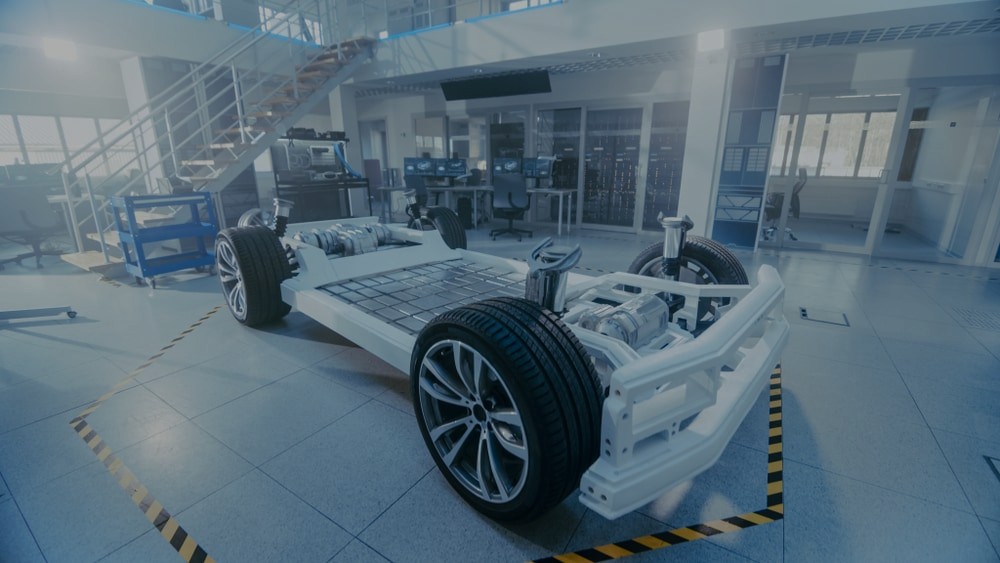

Originally published on fastradius.com on July 18, 2022
The popularity of electric vehicles (EVs) began with the Toyota Prius, a hybrid vehicle powered by the combination of an internal combustion engine and a nickel-metal hydride battery. Since the introduction of the Prius, many hybrid and battery electric vehicles (BEVs) have entered the market, and the adoption of electric vehicles continues to increase year over year. In 2020, 3.1 million EVs were sold and in November of 2021 alone, over 721,000 plug-in vehicles were sold, setting a monthly sales record and signifying a growing interest in EVs — and there’s no sign of that trend slowing down.
General Motors plans to phase out gas-powered cars — aka internal combustion engine (ICE) vehicles — and pledges that its entire fleet will be comprised of zero-emission vehicles by 2035. Similarly, President Biden announced that the government fleet will be replaced with EVs, totaling over 645,000 vehicles, and issued an executive order with the goal of making half of all new cars sold in 2030 electric. Additionally, Bloomberg Markets predicts that over two-thirds of global car sales will be electric by 2040, while Edison Electric estimates that EV sales will surpass 3.5 million annually by 2030.
It’s clear that the future of the automotive industry is electric, and now is the time for companies to start developing EVs. Keeping up with the automotive production market can be tricky, but using additive manufacturing can simplify the process and help automotive original equipment manufacturers (OEMs) thrive as we enter an increasingly electric world.
Compared to traditional manufacturing methods, additive manufacturing allows for lighter components and increased customization, while also avoiding supply chain constrictions that have been prominent production roadblocks. With relatively low production volumes and a growing yet uncertain demand, EV manufacturers and suppliers can benefit from the flexibility, speed, and affordability that additive manufacturing offers.
Additive manufacturing offers several advantages to those in the EV industry. By factoring additive manufacturing into the EV production cycle, you can:
The automotive industry has spent years pursuing various lightweighting options, as less weight means increased fuel efficiency. In EVs, lighter parts result in better battery life, so manufacturers have been scrambling to find ways to make vehicles lighter without sacrificing quality or safety.
Enter additive manufacturing. Not only does 3D printing enable engineers to create complex, organic geometries using less material than conventional manufacturing techniques, but it also enables them to consolidate several parts into a single component that requires little-to-no assembly. The resulting product is often lighter than a fitted or welded part and in many applications can match traditionally manufactured parts when it comes to strength. Additive’s ability to create intricate parts can also help when it comes to maximizing battery space, as designers are able to fabricate casings with thinner walls into complex, stackable shapes.
While 3D printing has a reputation for having a limited selection of compatible materials, the number of available options has grown significantly over the last few years. There are now many that meet automotive specifications and can help reduce vehicle weight. For example, some materials offer a 20% weight reduction compared to glass fiber reinforced polybutylene terephthalate (PBT). You can even formulate custom 3D printing materials to achieve specific mechanical properties if no existing options fulfill your needs.
Additionally, many materials compatible with 3D printing have better thermal capabilities than traditional manufacturing materials, which can help prolong EV battery lifespans. After all, EV batteries are best kept at mild temperatures — 50°F is best for storage, while 77°F is ideal for charging and driving — but maintaining those temperatures can be tricky when using metal components. On the other hand, 3D printed encasings and heat exchangers give engineers more material options that can help better regulate battery temperatures.
While injection molding is ideal for high-volume production runs, it can be expensive and impractical when executing low-volume runs due to the cost of creating tooling. The demand for EVs is rapidly increasing, but it still isn’t near the market size of traditional ICE vehicles, so the cost-effectiveness of additive manufacturing at low volumes can help companies make the components they need at a reasonable cost-per-part.
Since additive manufacturing doesn’t require tooling, you can accelerate your manufacturing timeline. Compared to injection molding delivery times, additive offers a lead time reduction of up to 50%, which speeds up the iteration process and final production. As a result, companies can drastically cut vehicle development times by using additive manufacturing.
The lack of tooling makes updating designs and providing customization options easier and significantly less expensive. With additive manufacturing, customers can easily customize everything from badges to brackets without significantly driving up costs or production times.
Following traditional manufacturing methods often means getting caught up in supply chain issues — especially with recent global supply chain problems. Additive manufacturing enables companies to skip many of these potential bottlenecks, as companies can make parts anywhere they or their manufacturing partners have 3D printers. Instead of waiting for traditional production and shipment channels, they can design and print parts on-demand from anywhere.
Many industries use additive manufacturing in prototyping due to its speed and affordability, and the EV industry is no different. Additionally, companies use additive manufacturing to cost-effectively create jigs, fixtures, and other tools necessary for the manufacturing and prototyping processes.
When it comes to end-use parts, companies use 3D printing technology to create everything from battery boxes to lighting bezels. Enclosures, trim, clips, badges, brackets, as well as air, fluid, and wire routing can be 3D printed. Some companies are printing charging ports, plug covers, HVAC kinematics, mounts, and caps.
3D printing is increasingly popular when it comes to electrical connectors, as they are often small and require extreme precision, which can increase the cost of traditional plastic injection molding. In the future, it may even be possible to 3D print EV batteries at scale.
Additive manufacturing offers EV manufacturers plenty of benefits, and it’s likely the future of the automotive industry. However, shifting from traditional manufacturing techniques to additive manufacturing won’t necessarily be easy for every organization.
That’s where working with an experienced manufacturing partner comes in. At SyBridge we’re experts in additive manufacturing. When you work with us, we’ll help ensure your 3D parts are ready for production — and you can also use our online tools to explore design, material, and production options or begin a quote. Ready to get started? Create an account to upload your part designs or contact us today!
How SyBridge Expertise Optimizes Your Process and Lowers Costs In the fast-paced world of manufacturing,…
Imagine a world where your product stands out on crowded shelves, not just visually, but…
Injection molding is an efficient production method when high volumes of identical parts are needed. However,…
As a production method, urethane casting sits in stark contrast to the hard tooling of injection molding. Whereas injection…
CNC machining is among the most popular manufacturing methods because the process is highly versatile, repeatable,…
Originally published on fastradius.com on October 20, 2021 Multi Jet Fusion enables the efficient production…